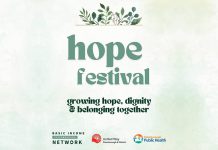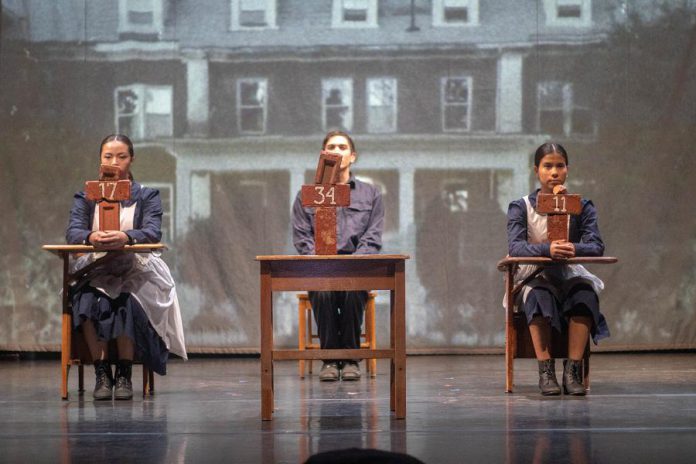
On Saturday, November 2nd at Market Hall Performing Arts Centre in downtown Peterborough, Public Energy Performing Arts presents The Mush Hole by Kaha:wi Dance Theatre, a powerful portrayal in dance and multimedia of the residential school experience as told by survivors.
Premiering at Young People’s Theatre in Toronto until October 25th, the performance comes to Peterborough for one night only before continuing its North American tour, where it will end in Washington D.C. at the National Museum of the American Indian.
The Mush Hole tells the story, from the perspective of survivors, of the Mohawk Institute Residential School in Brantford, Ontario — Canada’s first residential school that became the model for all that followed.
From 1828 to 1970, the Mohawk Institute was located on 350 acres of farm land, all of which were or had been part of the land of Six Nations at some point.
First operated by the Anglican Church of Canada and then by the Government of Canada, it served as an industrial boarding school for First Nations children from Six Nations, as well as other communities throughout Ontario and Quebec.
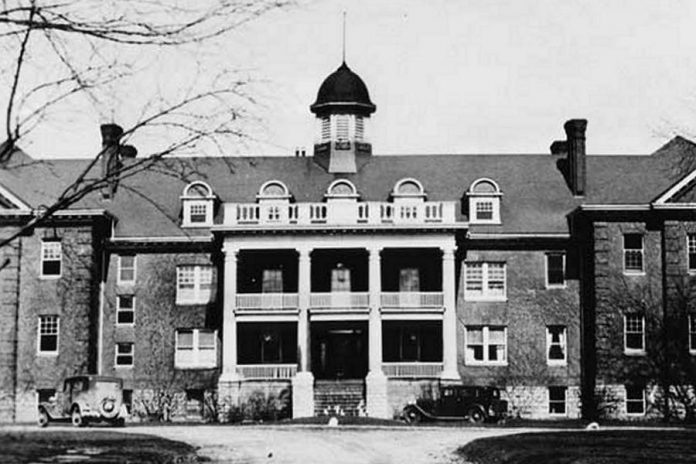
The Mohawk Institute — nicknamed “The Mush Hole” by students because of the sticky porridge they were served every morning — was a concerted effort by Canadian authorities to assimilate First Nations children into European Christian society, with the aim of severing the continuity of culture from parent to child.
An estimated 15,000 First Nations children were sent to the Mohawk Institute while it was operating, leaving a legacy of trauma that is still being exposed.
Many survivors have described suffering physical, sexual, and emotional abuse at the school, which among other things included a closet-like prison cell in the basement where students who tried to escape were held for days at a time.
The Mohawk Institute was finally closed in 1970, and reopened in 1972 as the Woodland Cultural Centre, a non-profit organization that serves to preserve and promote First Nations culture and heritage — around 15,000 people visit the Mohawk Institute Indian Residential School Building, now part of the Woodland Cultural Centre, every year.
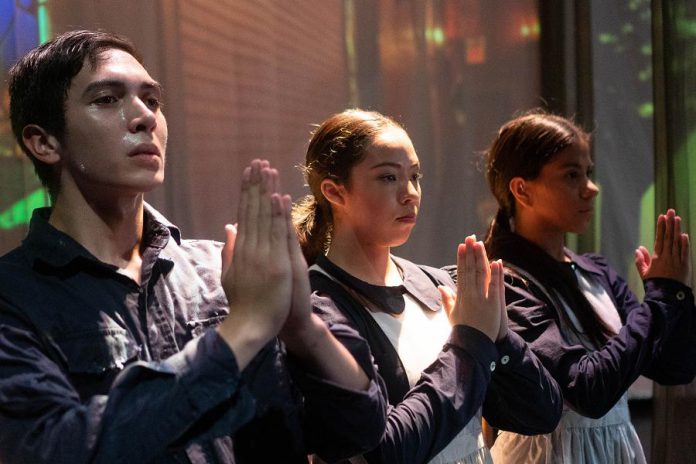
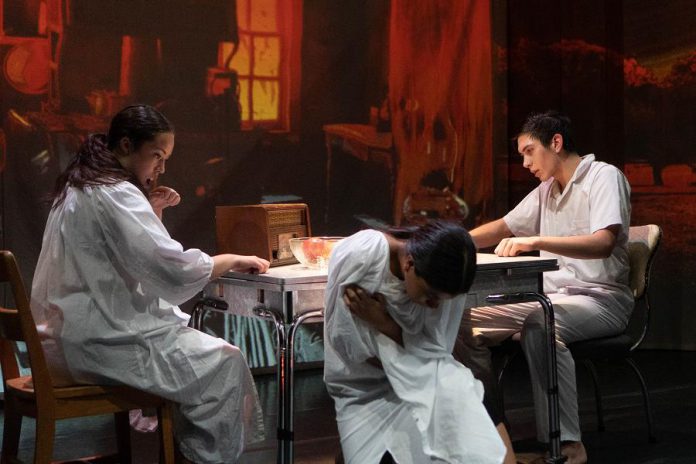
The Mush Hole was created by Kaha:wi Dance Theatre’s artistic director, Santee Smith of the Kahnyen’kehaka Nation, Turtle Clan, Six Nations of the Grand River. Smith is an award-winning producer and choreographer, whose original work has been seen around the world and featured on film and television. Her dance work about lacrosse, The Creator’s Game, had its world premiere for a crowd of 3,000 at the Peterborough Memorial Centre during the 2012 Od”min Giizis Festival.
Smith’s collaborators on The Mush Hole include the acclaimed set designer Andy Moro and video designer Ryan Webber, whose multimedia projections make the audience feel they are right there in the terrifying bowels of the Mush Hole itself.
The production was made in connection with survivors, including their writings and interviews. Creation began within the building itself and on the grounds of the Mohawk Institute at the Woodland Cultural Centre.
“The Mush Hole is a story about hope and finding light in dark places,” Smith says. “As much as it speaks to intergenerational trauma, it screams resilience. Every single element represented on stage comes from survivors sharing their experiences with us.”
According to Toronto Star theatre critic Karen Fricker, reviewing the premiere of The Mush Hole at Young People’s Theatre, the play offers “a very affecting vantage onto what the experience of the schools felt and looked like: the images and layering of feelings are powerful and haunting, and open-ended in a way that is likely to provoke conversation and further inquiry. Something dark and hidden is being brought into view, impossible to ignore.”
The Kaha:wi Dance Theatre production was supported over a three-year creative process by some of Canada’s most important arts institutions, including the Banff Centre, the Woodland Cultural Centre, and McMaster University’s Socrates Project. It is expected to go on a world tour in 2020-2021.
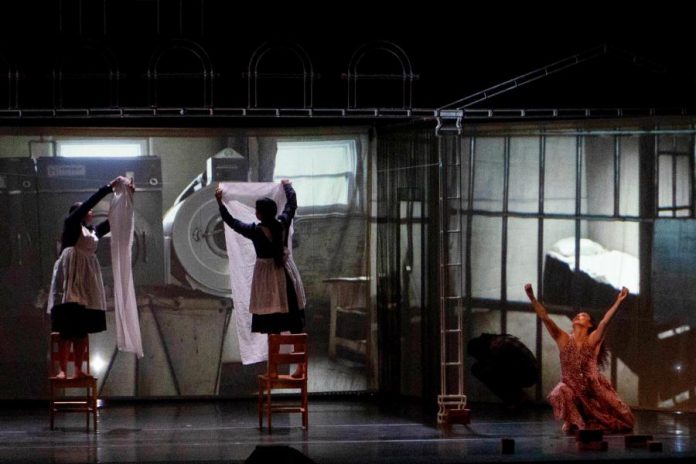
You have an opportunity to be among the first audience members to experience this extraordinary production at 7:30 p.m. on Saturday, November 2nd at Market Hall Performing Arts Centre (140 Charlotte St., Peterborough).
Tickets are $25 ($12 for students, seniors, and the underwaged or $7 for high school students), plus a $3 box office service fee, and are available in person at the box office, by phone at 705-749-1146, or online at markethall.org.
Along with Smith, the performers are Jonathan Fisher, Julianne Blackbird, Montana Summers, and Semiah Kaha:wi Smith. Following the play, Smith and the artists will be on stage to talk more about the play, its creation, and its ties to Canadian history.
VIDEO: The Mush Hole
Content advisory: This production is a theatrical portrayal of the environment and experiences of students at the Mohawk Institute, a Canadian Indian residential school. The play also depicts the memories and impacts on families and community of other residential school survivors. Their experiences include physical abuse, fighting, sexual abuse, emotional trauma, family conflict and substance abuse. Herbal cigarettes are smoked onstage.
For more details about Public Energy Performing Arts’ 2019-20 season, visit publicenergy.ca/performance-season/2019-2020/.
kawarthaNOW.com is proud to be a sponsor of the 2019-20 season of Public Energy Performing Arts.






